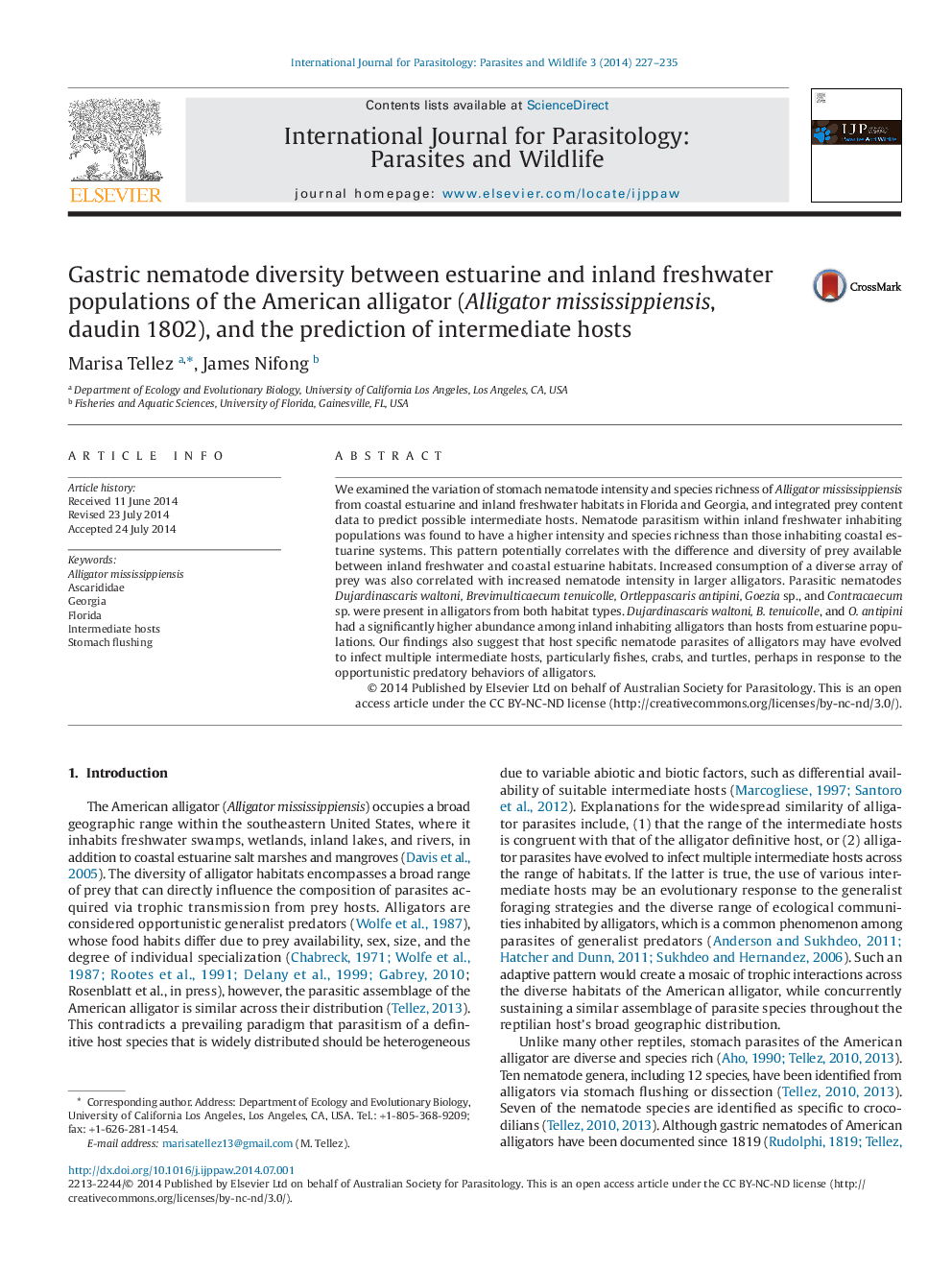| Article ID | Journal | Published Year | Pages | File Type |
|---|---|---|---|---|
| 2055211 | International Journal for Parasitology: Parasites and Wildlife | 2014 | 9 Pages |
•Gastric parasitism was highest among inland freshwater alligators.•Crabs, fishes, and turtles are predicted intermediate hosts of alligator nematodes.•Use of multiple intermediate hosts may reflect host's generalist foraging behavior.•Results provide further evidence of the unique crocodilian-parasite dynamic.
We examined the variation of stomach nematode intensity and species richness of Alligator mississippiensis from coastal estuarine and inland freshwater habitats in Florida and Georgia, and integrated prey content data to predict possible intermediate hosts. Nematode parasitism within inland freshwater inhabiting populations was found to have a higher intensity and species richness than those inhabiting coastal estuarine systems. This pattern potentially correlates with the difference and diversity of prey available between inland freshwater and coastal estuarine habitats. Increased consumption of a diverse array of prey was also correlated with increased nematode intensity in larger alligators. Parasitic nematodes Dujardinascaris waltoni, Brevimulticaecum tenuicolle, Ortleppascaris antipini, Goezia sp., and Contracaecum sp. were present in alligators from both habitat types. Dujardinascaris waltoni, B. tenuicolle, and O. antipini had a significantly higher abundance among inland inhabiting alligators than hosts from estuarine populations. Our findings also suggest that host specific nematode parasites of alligators may have evolved to infect multiple intermediate hosts, particularly fishes, crabs, and turtles, perhaps in response to the opportunistic predatory behaviors of alligators.
Graphical AbstractFigure optionsDownload full-size imageDownload as PowerPoint slide
